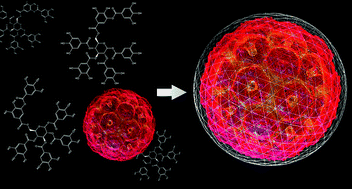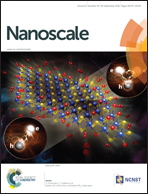Catching a virus in a molecular net
Abstract
A metal–organic molecular net composed of tannic acid (TA) and iron(III) was constructed around the brome mosaic virus (BMV) particle to determine whether the added net could act as a transport barrier for water, and if the net could stabilize the virus in physically or chemically challenging environments. This new virus engineering strategy is expected to provide benefits both in the study and technological applications of viruses. For instance, a virus wrapped in a thin molecular layer could be extracted from solution either in air or vacuum, and its structure, composition and even internal dynamics could be interrogated by methods not compatible with a liquid environment. Atomic force microscopy (AFM) studies of Fe(III)–TA coated BMV in liquid and in air supported a marked resistance to dehydration when compared to wtBMV. Native charge detection mass spectrometry (CDMS), was employed to estimate the number of molecules in the molecular net which wrapped the virus. The CDMS data suggested that less than one molecular monolayer wrapped the virus. Additionally, it was found, that this very thin molecular coat was sufficient to render the coated viruses resistant to storage conditions that typically lead to virus disassembly over time. A temporary coat imparting increased resistance to disassembly could be useful in adding time delay control or alleviate required storage conditions of engineered viruses for therapeutic purposes.

- This article is part of the themed collection: 2016 Nanoscale HOT Article Collection

 Please wait while we load your content...
Please wait while we load your content...